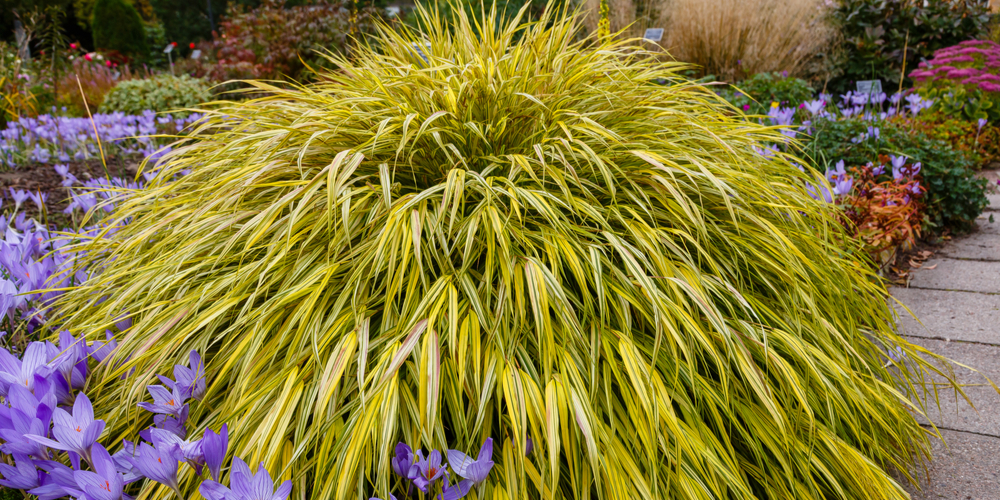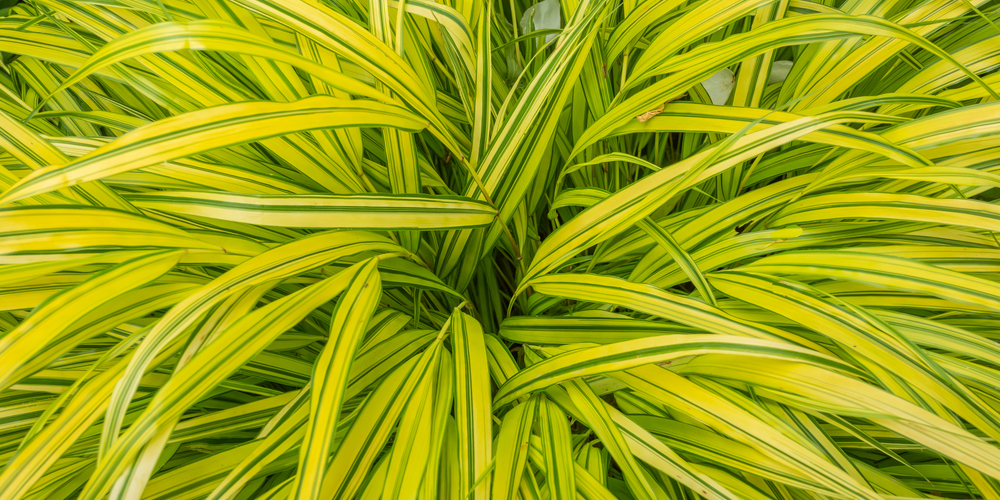Do you have a few brown patches in your once-lush, green carpet of Japanese forest grass? Or is your entire plant wilting and looking sad? If so, don’t worry – you can bring your plant back to life with a little TLC. This post will dig into the three most common reasons why Japanese forest grass dies – keep reading to learn more!
Improper Watering

One of the most common reasons Japanese Forest grass struggles is improper watering. This grass species thrives in consistently moist soil, so it won’t tolerate arid conditions well. Signs of under-watering include wilting or brown leaves.
If your grass isn’t getting enough water, try the following:
- Water regularly. Aim to provide your Japanese forest grass with an inch (2.5 cm) of water per week through rainfall or irrigation. Typically, if the top inch of soil feels dry, it’s time to give your plant a drink.
- Add a layer of mulch. This helps keep the soil moist and the roots cool in hot weather.
- Use a moisture meter. This tool will help you determine the moisture content of the soil so you can adjust your watering schedule accordingly.
Over-Watering
On the other hand, giving too much water can also be deadly for Japanese Forest grass. If the roots are constantly wet, they will start to rot. This problem is usually caused by over-watering or planting the grass in a pot or area with poor drainage. Signs of over-watering include drooping leaves and changes in leaf color.
If your grass is getting more water than it needs, try the following:
- Allow the soil to dry out before watering again. To test if it’s dry, stick your finger about an inch into the soil.
- Improve drainage. If you’re planting Japanese Forest grass in a pot, make sure it has drainage holes. If you’re growing it in the ground, avoid areas with poor drainage. To improve drainage, you may need to amend the soil with sand or organic matter.
Extreme Temperatures
Another reason your Japanese forest grass may die is extreme temperatures – either too hot or too cold. While this grass species is technically classified as “cold hardy,” that doesn’t mean it can withstand freezing temperatures. In fact, extended periods of frost will kill Japanese forest grass.
Similarly, if your area is prone to heat waves, your plant may suffer in summer, especially in full sun. When exposed to extended periods of heat, Japanese Forest grass will start to turn brown and wilt. In addition, the leaves will become dry and crispy, leading the plant to eventually die.
Too Much Sun
Last but not least, another reason for unhealthy Japanese forest grass is sun exposure. While some plants love basking in sunlight all day long, this isn’t the case for this particular grass species. Direct sun can cause your plant’s leaves to bleach out and turn yellow or white.
If your grass is getting too much direct sunlight, try moving your plant to a shadier spot in your yard or garden. Japanese forest grass grows best in full or partially shaded areas – so somewhere that gets a few hours of light per day should be perfect.
Conclusion
Now that you know the three most common reasons why Japanese forest grass dies, you can work to avoid them. And if your plant is already showing signs of poor health, don’t despair—with a bit of effort, you can nurse it back to life and enjoy its beauty for years to come!
